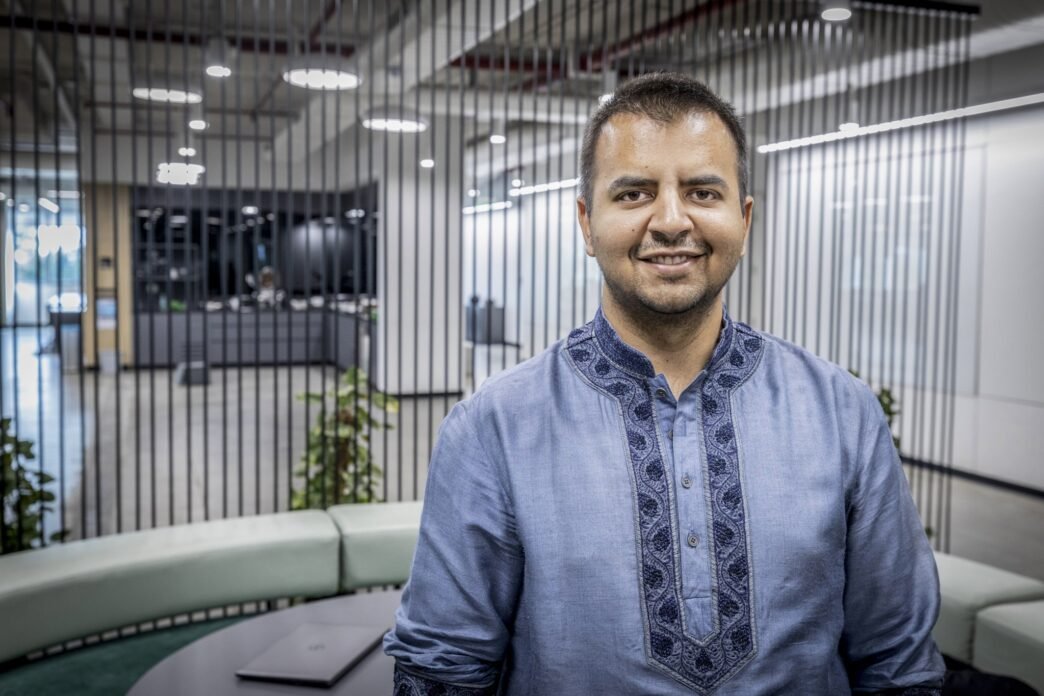Ola founder Bhavish Aggarwal is making a significant move in the world of artificial intelligence (AI). He is set to invest a substantial $230 million in Krutrim, a rapidly growing AI startup focused on large language models (LLMs) specifically designed for Indian languages. This investment comes as India positions itself to compete in the global AI race, a field that has long been dominated by U.S. and Chinese firms.
A Vision for India’s AI Ecosystem
Aggarwal, known for his entrepreneurial ventures backed by SoftBank, is committing the funds primarily through his family office, with the goal of advancing Krutrim’s mission to create an AI ecosystem that caters to Indian languages and their specific needs. In an official announcement on social media platform X (formerly Twitter), Aggarwal revealed that Krutrim is targeting a total investment of $1.15 billion by the end of next year, with the remaining funds expected to come from outside investors.
This investment highlights a growing focus on AI innovation in India. Historically, the country has struggled to break into the ranks of global leaders in AI, with U.S. companies like OpenAI and Google, along with Chinese firms like Baidu, dominating the field. But the landscape is changing rapidly, with Indian startups like Krutrim gaining attention for their unique approaches to AI.
Krutrim’s AI Models: Open Source and Cutting-Edge
Krutrim is not just another AI startup—it’s pushing boundaries. The company recently made waves by releasing Krutrim-2, a highly advanced 12-billion parameter language model. This model has shown impressive results in processing Indian languages, a challenge that has been overlooked by many international AI developers. In tests for sentiment analysis, Krutrim-2 scored 0.95 on a scale where competing models only reached 0.70, showcasing its superior understanding of sentiment in Indian languages.
Moreover, Krutrim-2 demonstrated an 80% success rate in code generation tasks, a significant accomplishment that speaks to the potential of AI in India’s tech ecosystem. What sets Krutrim apart even further is its commitment to the open-source community. The company has released several specialized AI models, including systems for image processing, speech translation, and text search, all specifically optimized for Indian languages. These models are freely available to the public, encouraging collaboration within the Indian AI community.
The Indian AI Supercomputer: A Game-Changer for the Nation
Krutrim’s ambitions go beyond just language models. The startup recently announced plans to build India’s largest supercomputer in collaboration with Nvidia, a global leader in AI hardware. This supercomputer is expected to go live by March 2025, with plans for continuous expansion throughout the year. It will be a major milestone for India, providing the computational power needed to push AI research and development to new heights.
Bridging the Gap with BharatBench
In addition to its language models and supercomputer plans, Krutrim has developed its own evaluation framework, called BharatBench, to assess AI models’ proficiency in Indian languages. Most existing AI benchmarks are designed around English and Chinese, leaving a gap in evaluating models for Indian languages. BharatBench addresses this gap by providing a more tailored evaluation framework that focuses on the unique characteristics of Indian languages, such as grammar, syntax, and cultural context.
Key Metrics and Performance
To demonstrate the power and utility of its models, Krutrim has published impressive performance metrics for its systems. For example:
| Task | Krutrim-2 Score | Other Models |
|---|---|---|
| Sentiment Analysis | 0.95 | 0.70 |
| Code Generation | 80% Success Rate | N/A |
| Grammar Correction | 0.98 | N/A |
| Multi-Turn Conversations | 0.91 | N/A |
These high scores suggest that Krutrim’s models are not only capable of understanding complex Indian languages but are also adaptable to various applications, from sentiment analysis to coding.
A New Era for Indian AI Startups
Aggarwal’s involvement in Krutrim underscores his belief in the potential of India to lead the way in AI innovation. While the country has long been a hub for outsourcing and tech services, this new venture represents a bold step toward creating a more self-sustaining AI ecosystem.
Krutrim’s decision to open-source its models is particularly important. It enables developers across India to contribute to the creation of a world-class AI ecosystem, one that can cater to the specific needs of the Indian population, as well as the diverse languages and dialects spoken across the country. In Aggarwal’s own words: “By open sourcing our models, we hope the entire Indian AI community collaborates to create a world-class Indian AI ecosystem.”
A Competitive Global AI Landscape
The timing of Krutrim’s announcement is significant. India is actively working to establish itself as a serious player in the AI field. In recent months, companies like DeepSeek have demonstrated the country’s growing capabilities in AI research. DeepSeek’s R1 reasoning model, built on a modest budget, has garnered attention for its impressive performance, which was celebrated by the Indian government. The country also announced that it would host DeepSeek’s large language models on domestic servers.
As Krutrim expands its own reach with its cloud offerings, including DeepSeek’s models hosted on Indian servers, it becomes evident that India is making strides to shape its own AI future.
Looking Ahead: The Road to $1.15 Billion
With the funding announcement and its groundbreaking technological developments, Krutrim is setting itself up for rapid growth. By the end of 2025, the company aims to raise the additional $920 million to hit its $1.15 billion target, which will accelerate its plans for further model development, supercomputer infrastructure, and partnerships with other tech giants.
In the coming years, Krutrim’s success could be a key factor in India’s rise as a global AI powerhouse. The country’s growing focus on AI innovation is helping to challenge the dominance of U.S. and Chinese tech firms, with Indian startups like Krutrim taking the lead.
Conclusion: The Future of AI in India
Bhavish Aggarwal’s $230 million investment in Krutrim is a bold move that could have significant implications for the future of AI in India. With a focus on Indian languages, cutting-edge models, and strategic partnerships, Krutrim is positioning itself at the forefront of India’s AI revolution. As India continues to make strides in this space, it will undoubtedly play a critical role in shaping the global AI landscape.













